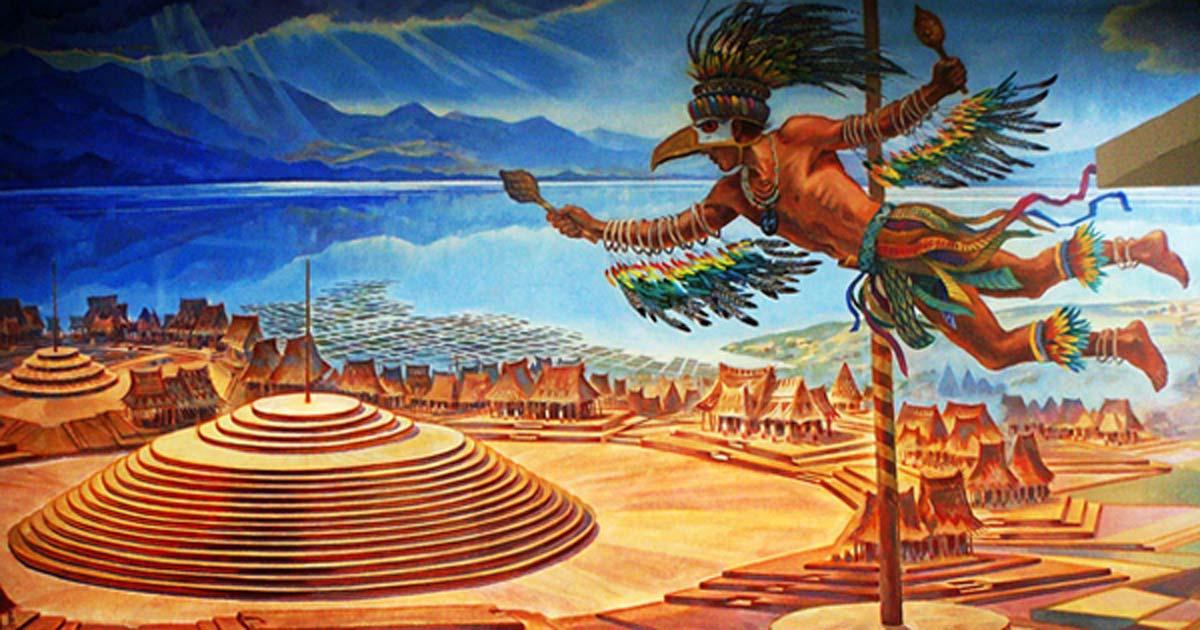
Were Mexico’s Circular Pyramids Really Made for a Flying Ceremony?
Guachimontones (known alternatively as Huachimontones) is an archaeological site located in the western Mexican state of Jalisco. This is an important site of the Teuchitlan tradition, which was a pre-Columbian complex society that flourished in the western part of Mexico (occupying territories in the modern Mexican states of Jalisco and Nayarit). The Teuchitlan tradition is best known for its circular, step pyramid structures the main examples of which may be found at the site of Guachimontones.
Between 300 BC and AD 900, the western part of Mexico, in particular the Tequila Valley, saw the development of the Teuchitlan culture. So far, little information is available about this pre-Columbian culture. We do know that the name of this culture has been variously translated to mean ‘a place for the divine’, ‘a place for the god Tenoch’, or ‘a place dedicated to the revered god’. Additionally, the people of this culture are known to have subsisted on agriculture and fishing. Apart from that, not much is certain about the society of this culture, and how it might have functioned.

Principle circular pyramid in the Teuchitlan Archaeological Park, Jalisco, Mexico. (CC BY-SA 3.0)
Archaeology has provided some additional information about the Teuchitlan tradition. For example, it is known that obsidian, a natural volcanic glass, was exploited by the people of this culture. It has been claimed that the Teuchitlan inhabited an area that was rich in this natural resource, and were in control of over 1000 obsidian mines. It has been estimated that these mines produced up to 14000 tonnes of obsidian, which were then transformed by the city’s craftsmen into various objects, including weapons, such as swords and spearheads, mirrors, and jewelry.
- Xochicalco: New Wave Mayan City That Was a Prime Target for Destruction
- Mesoamericans at Teotihuacan kept Ferocious Animals Captive and May Have Fed them with Humans
- What Makes the Olmec Culture So Unique and Alluring?

Representative obsidian blade grave offering from Chiapa de Corzo, Mexico. (CC BY-SA 4.0)
It is also thanks to archaeology that another feature of the Teuchitlan tradition, the circular step pyramid structures, is known today. These monuments may be found only at Guachimontones, and as a matter of fact, dominate the site. In 1969/70, Guachimontones was discovered by an American archaeologist by the name of Phil Weigand. It was, however, only many years later, in 1996, that Weigand succeeded in securing the funds necessary to carry out excavations at the site.
- Tezcatlipoca: How Does the Supreme God of the Aztecs Compare to Other Omnipotent Deities?
- 1,000-year-old Maya pyramid might collapse into sacred ancient sinkhole in Mexico
- 650-Year-Old Temple to Aztec Wind God Unearthed Under Supermarket in Mexico

Circular stepped pyramid at Guachimontones, known as Circle 2. (CC BY-SA 3.0)
The pyramids at Guachimontones were so unique (apart from one small pyramid in Mexico City, the pyramids of the Teuchitlan are reckoned to be the only round ones in the world) that it did not take long for conspiracy theories to emerge. One of these, for example, was that these structures were built by the Jalisco government in an attempt to attract more tourists to the state. Another is that these pyramids were of extra-terrestrial origin. Archaeologists, however, reckon that the pyramids predate both the Incas and the Aztecs, and that they were not influenced by the Olmec culture.
There are several pyramids at the site of Guachimontones, all of which are formed of concentric circles. The main pyramid, known as Circle 2, is 18 m (59 ft) in height. This structure has 52 steps, which corresponds to the number of weeks in a year, and the number of years in the cycle of many Mesoamerican calendars. Whilst it is unclear as to what these pyramids may have been used for, it has been speculated that they served a ritual function, specifically for the worship of Ehecatl-Quetzalcoatl, a deity in the form of a feathered serpent who is worshipped by many pre-Columbian cultures across Mexico as the god of wind. Additionally, it has been proposed that a pole would have been placed in a hole on the summit of the pyramids so that the ‘Danza de los Voladores’ (meaning ‘Dance of the Flyers’), a ritual flying ceremony, may be performed.
In 2006, the site of Guachimontones was inscribed as a World Heritage Site as part of the ‘Agave Landscape and Ancient Industrial Facilities of Tequila’. This is not only a testament to the significance of this particular site, but also to the contribution that the Teuchitlan culture has had on the region.
Top image: Pictorial representation of Pyramid in Teuchitlán Guachimontones Museum. (CC BY-SA 3.0)
By Wu Mingren
References
Macuahuitl, 2017. Guachimontones. [Online]
Available at: https://www.atlasobscura.com/places/guachimontones
Mexico Archeology, 2017. Los Guachimontones. [Online]
Available at: http://www.mexicoarcheology.com/los-guachimontones/
Sutherland, A., 2016. Circular Stepped Pyramids Of Guachimontones And Teuchitlan Tradition – A Lost Ancient World In Mexico. [Online]
Available at: http://www.ancientpages.com/2016/03/13/circular-stepped-pyramids-of-guachimontones-and-teuchitlan-tradition-a-lost-ancient-world-in-mexico/
Tucker, D., 2013. Guadalajara Day Trip: Circular Pyramids of Guachimontones. [Online]
Available at: http://globaldeliveryreport.com/guadalajara-day-trip-circular-pyramids-of-guachimontones/
UNESCO, 2017. Agave Landscape and Ancient Industrial Facilities of Tequila. [Online]
Available at: http://whc.unesco.org/en/list/1209/
Woodman, S., 2017. A Guide to The Guachimontones, Western Mexico's Greatest Archaeological Wonder. [Online]
Available at: https://theculturetrip.com/north-america/mexico/articles/a-guide-to-the-guachimontones-western-mexicos-greatest-archaeological-wonder/
















Comments
I think there is an error here:
"This structure has 52 steps, which corresponds to the number of weeks in a year, and the number of years in the cycle of many Mesoamerican calendars"
From the article pictures it is clear that there is not 52 steps. The article features two photos of circle step pyramids, one being the "This structure" ("Cirle 2") referred to in the quote. Both images have the exact samenumber of steps, which is not 52, but
13 + 4